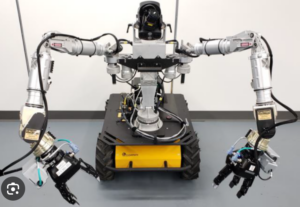Researchers have invented a soft new wearable robot that can help a person with Parkinson’s disease develop walking. A robotic garment worn around the hips and thighs provides a gentle push to the hips when the leg swings, helping the patient to take a longer step. The device completely eliminated the subject’s unwanted stopping indoors, allowing them to walk faster and farther than without the aid of the garment.
Unwanted sudden stop is one of the most common and probably the most debilitating of Parkinson’s disease, a neurodegenerative disorder that affects more than 9 million people worldwide. When people with Parkinson’s experience undesired washing, they suddenly lose the ability to move their legs, often in mid-stride, resulting in progressively shorter steps that shorten until the person comes to a complete stop. These episodes are one of the major causes of falls in people with Parkinson’s disease.
Today, sudden arrest is treated with curative pharmacological, surgical, or behavioral treatments, none of which are particularly effective.
Paul School of Engineering and Applied Sciences (SEAS), Harvard John A., and Sargent College of Health and Rehabilitation Sciences, Boston University, designed a human soft wearable robot to help people with Parkinson’s disease stop walking. A robotic garment worn around the hips and thighs provides a gentle push to the hips when the leg swings, helping the patient to take a longer stride.
The device eliminated the participants’ sudden stops indoors, allowing them to walk faster and further than without the aid of the garment.
“We found that just a little bit of mechanical assistance from our soft robotic clothes had an immediate effect and consistently improved our study subject’s walking across a variety of conditions,” said Conor Walsh, the Paul A. Maeder Professor of Engineering and Applied Sciences.
The study shows the potential of soft robotics in the presence of this depressing and desired dangerous Parkinson’s disease, which can allow treatment with this treatment and not only movement, but also independence.
Source: Science day

